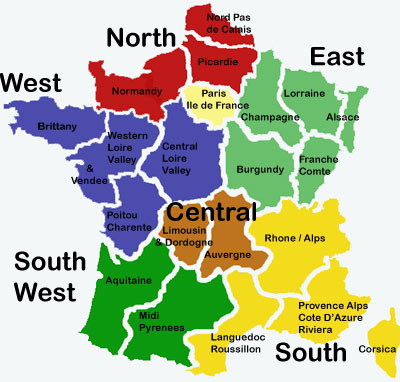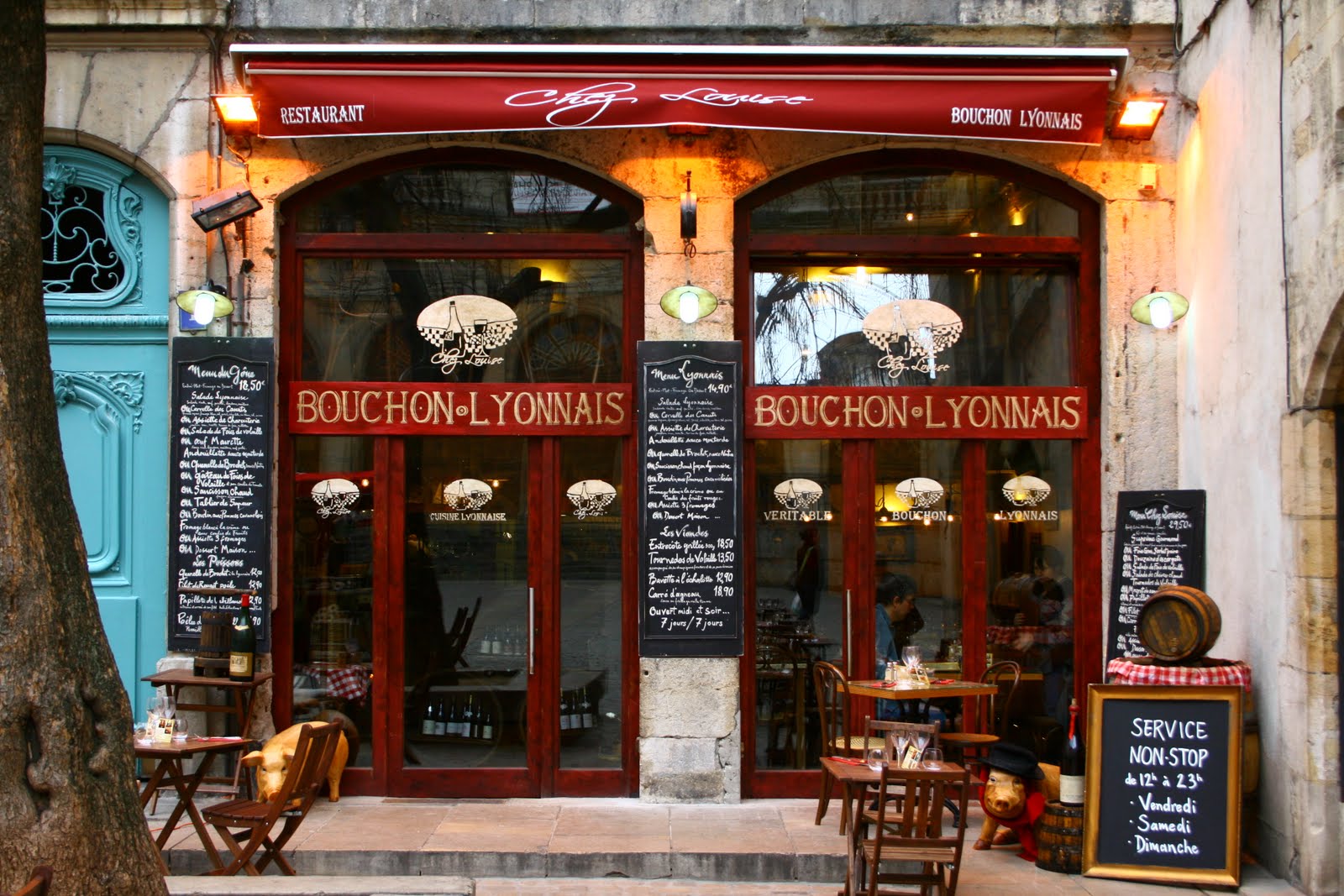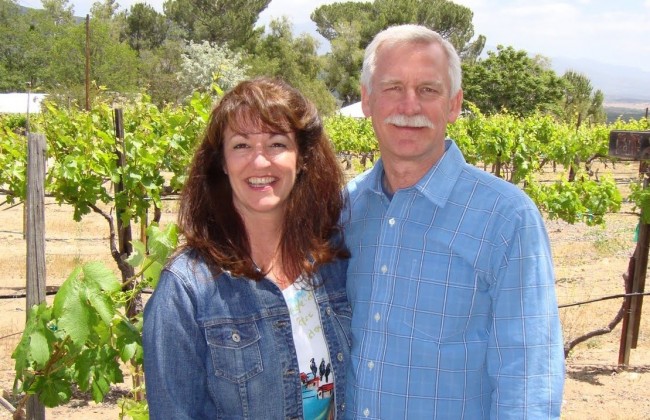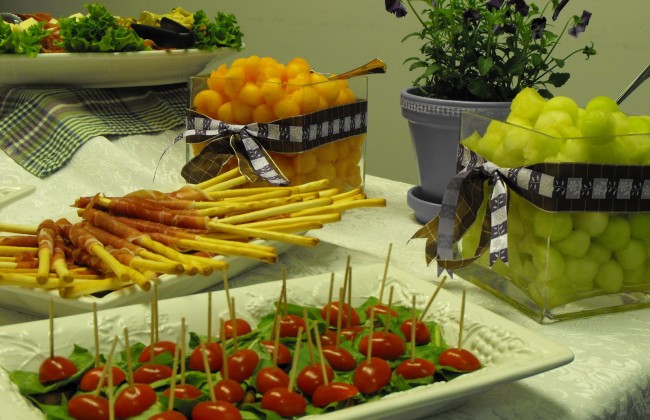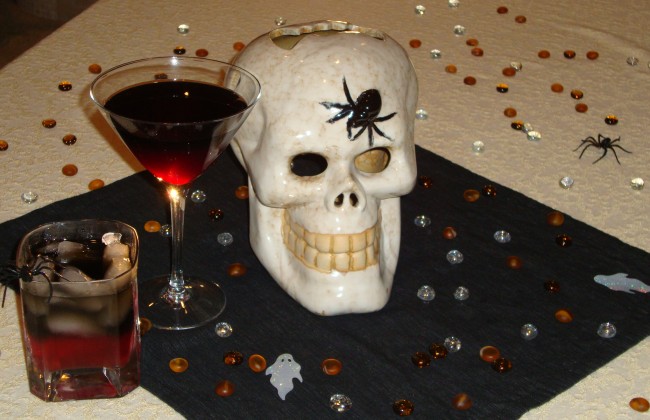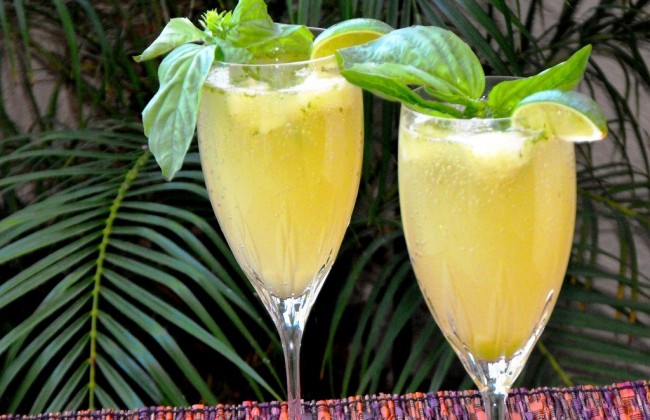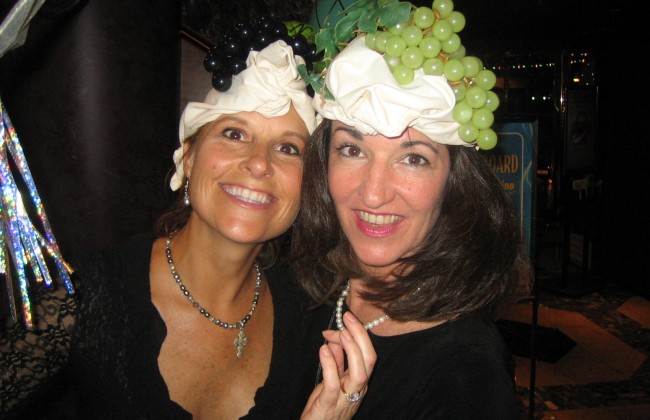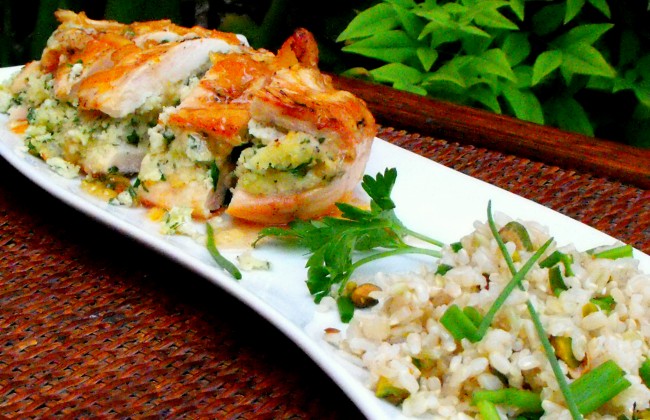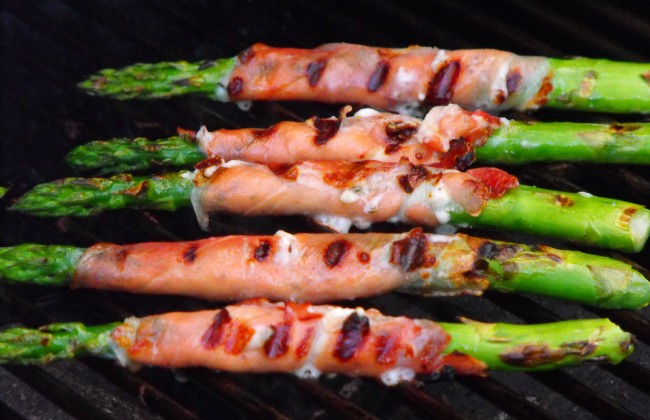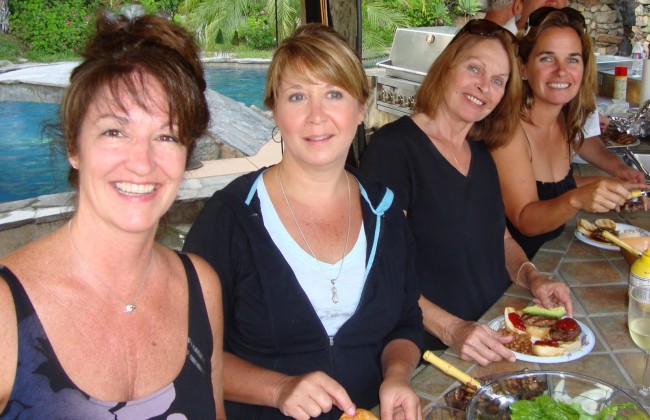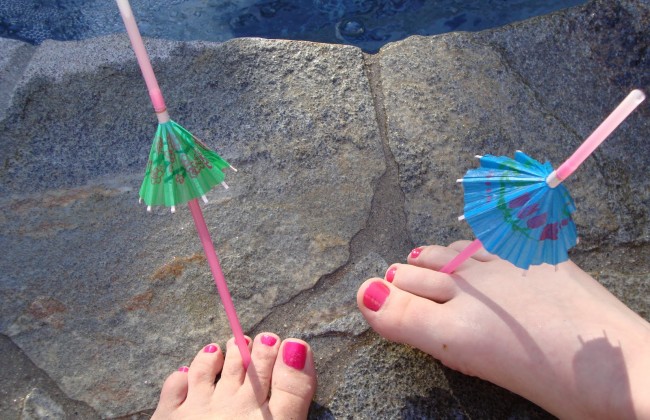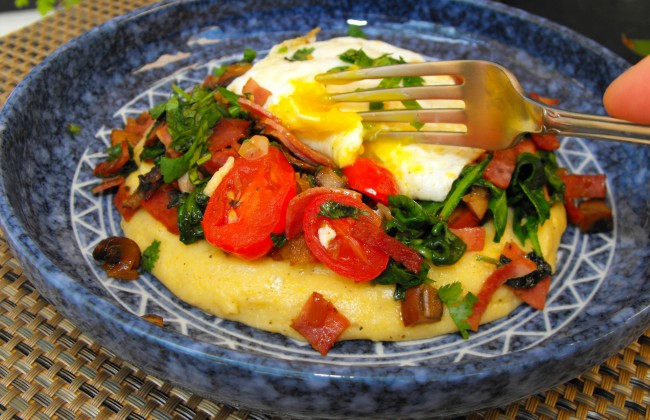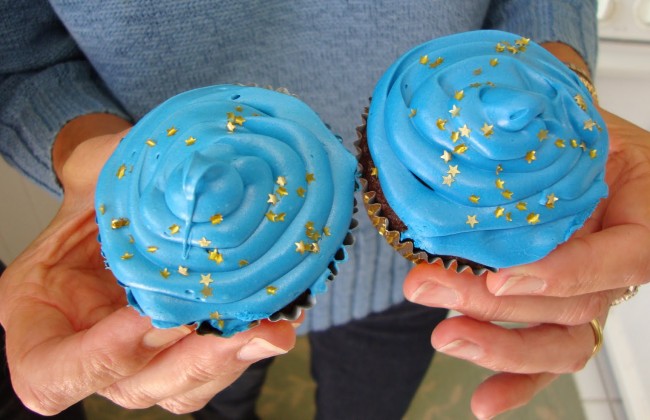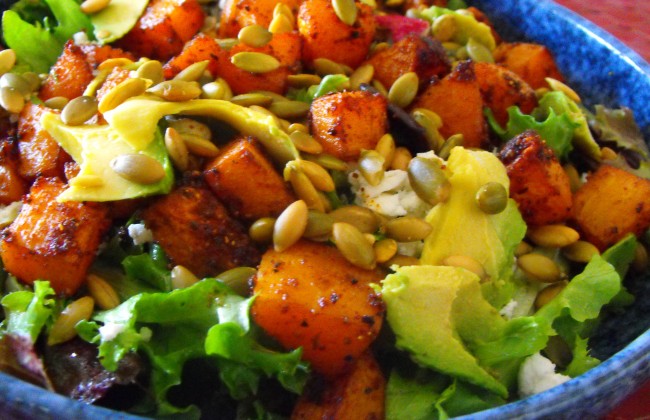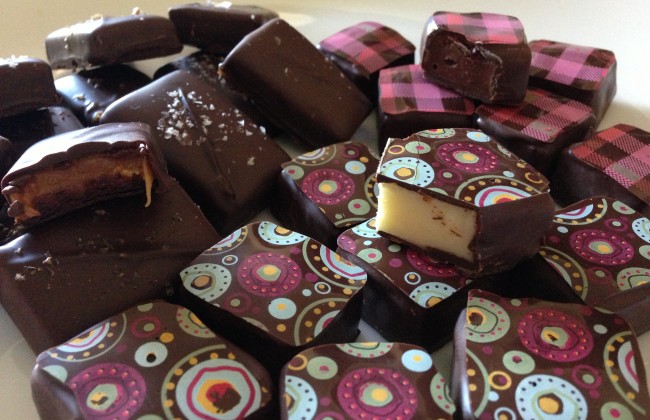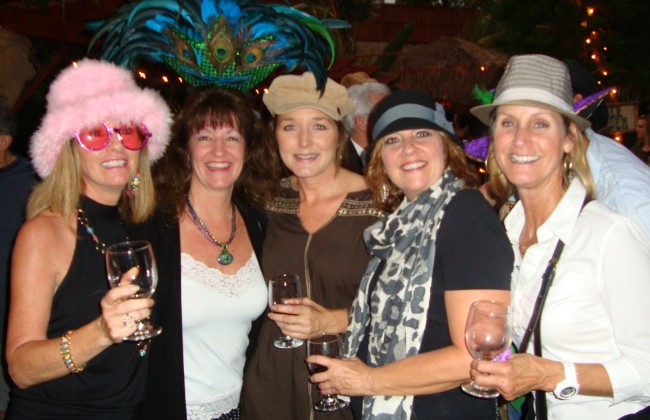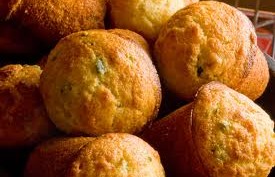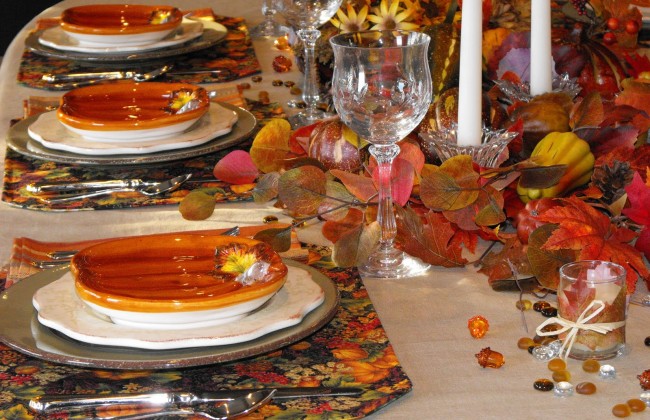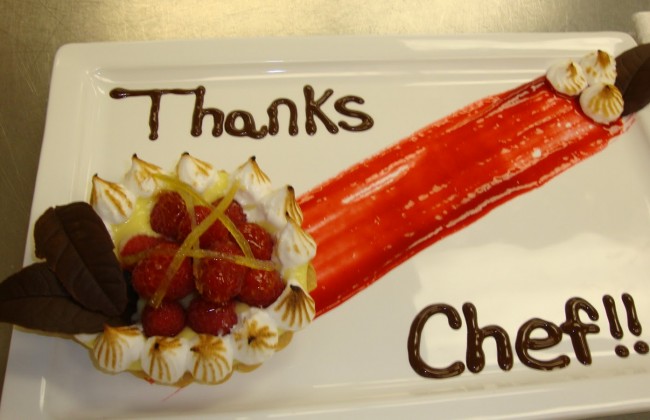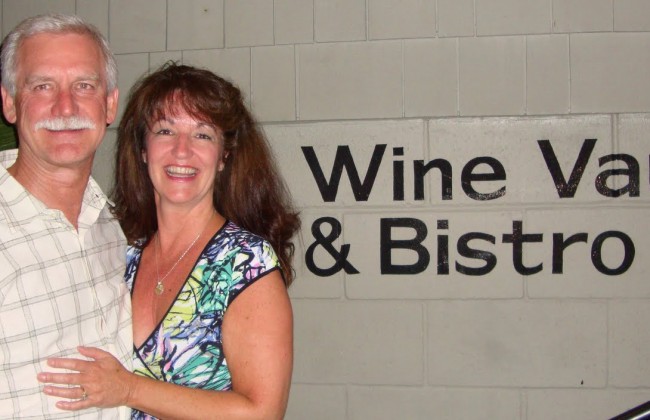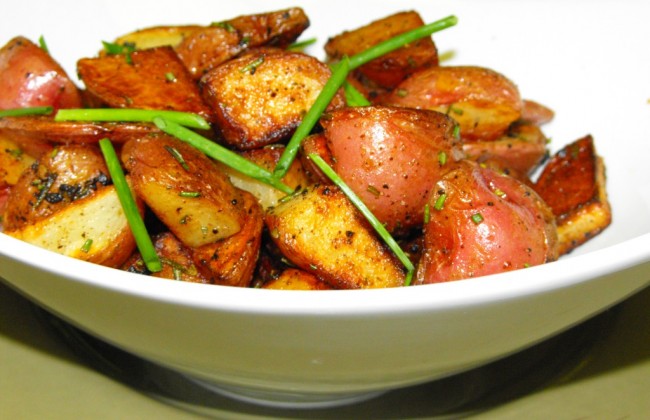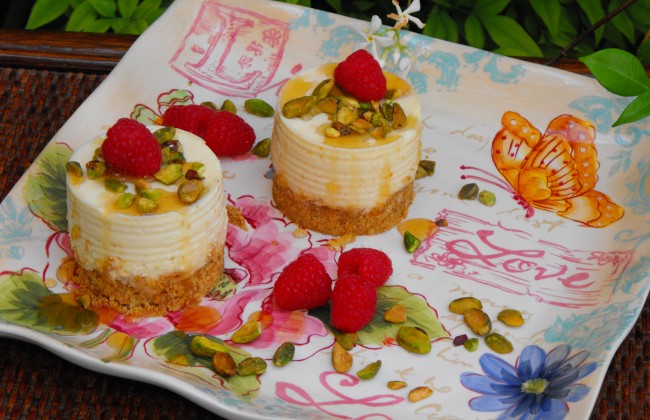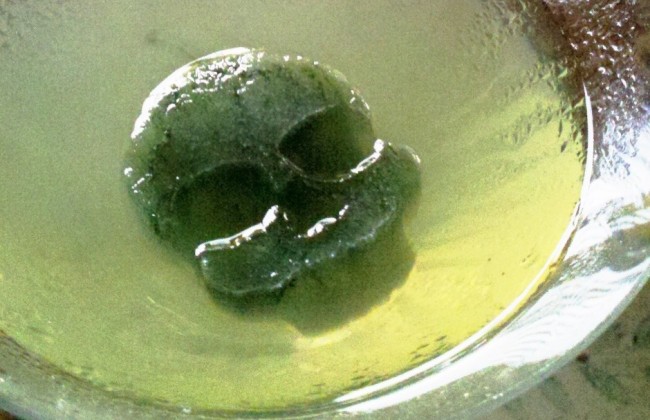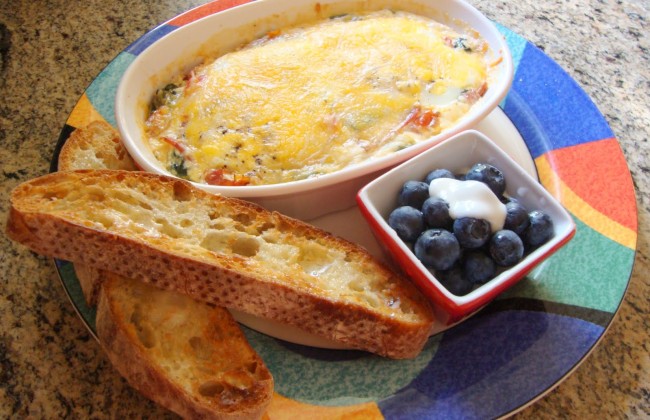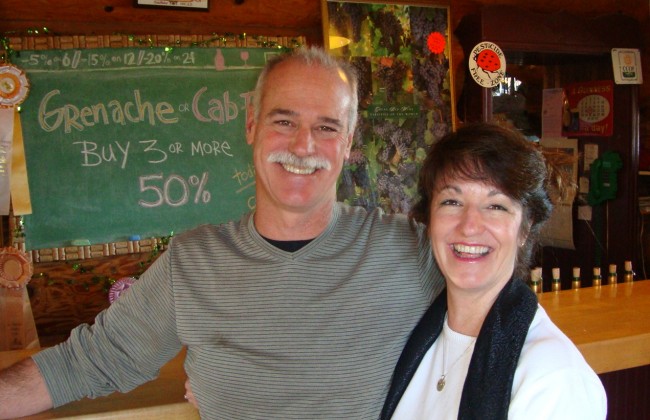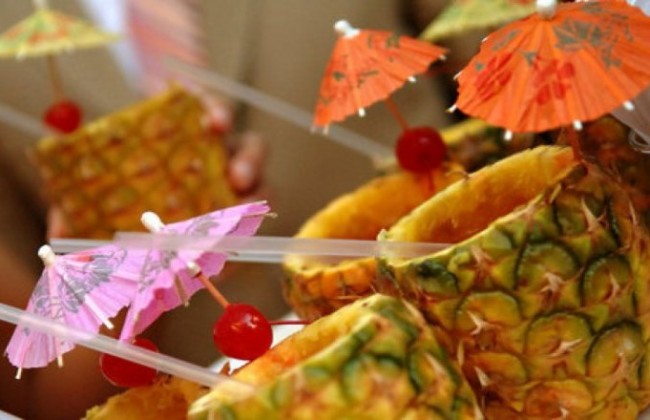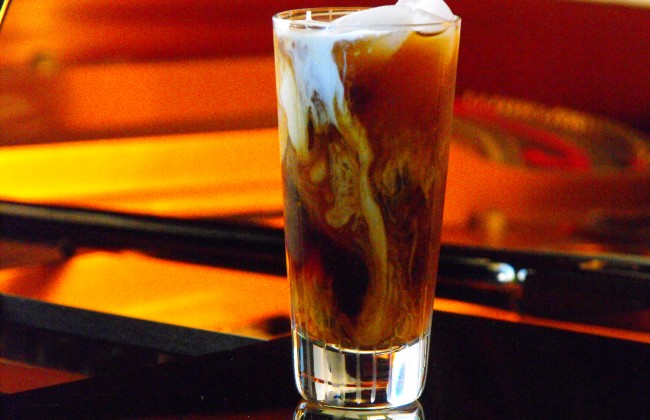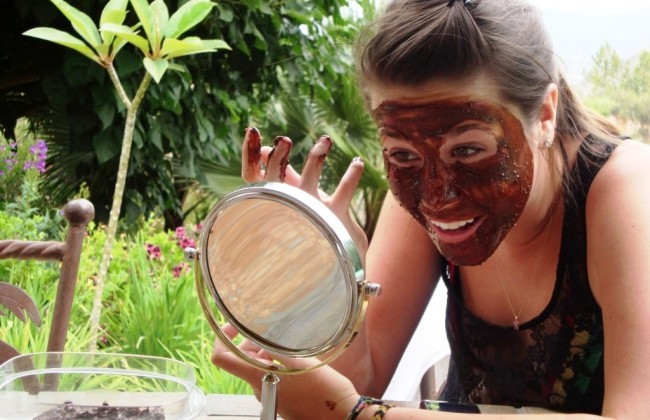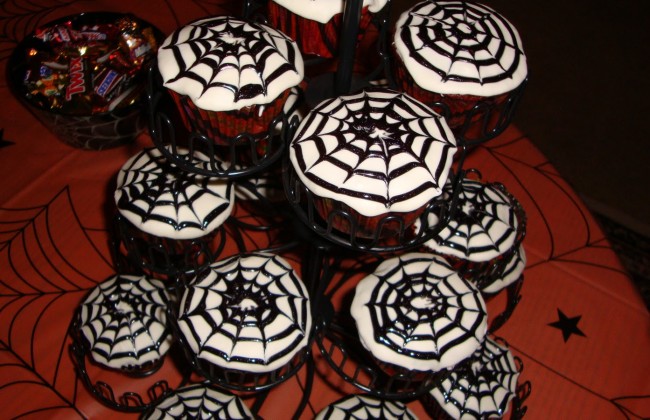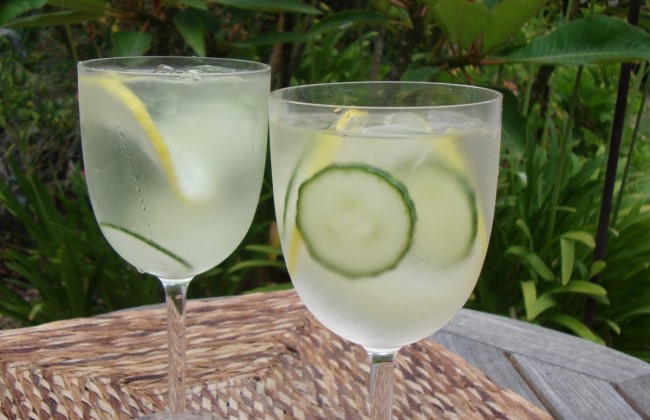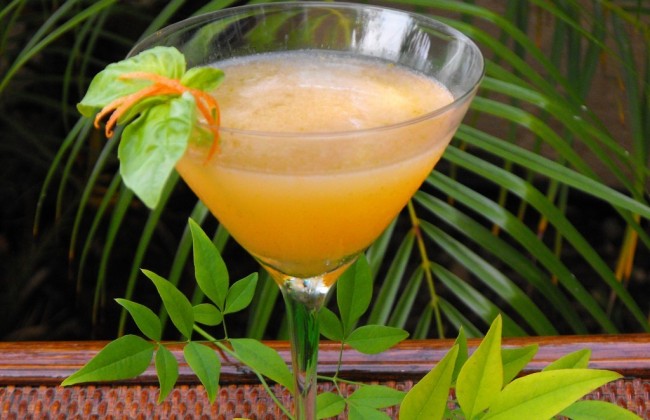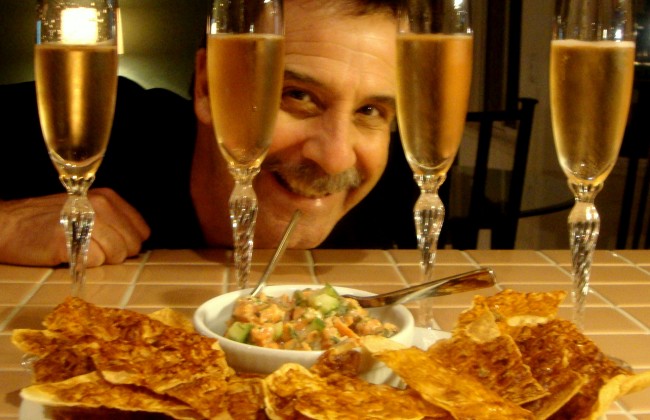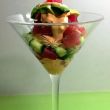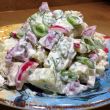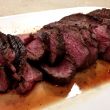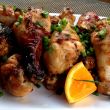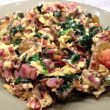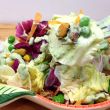Bienvenue en France! Welcome to France, a country filled with tales of aristocrats, wars and revolutions, but mostly of cuisine, wine and cheeses. On the International Cooking Tour we will discover not only the food of France but some of the people who made it what it is today. One such person, Jean-Anthelme Brillat-Savarin, said “Tell me what you eat and I will tell you who you are.” So who are you when it comes to food?
Since the 16th century, French cooking has been celebrated for creating the Western world’s finest recipes and culinary techniques. The traditional style of french cuisine is called haute cuisine. This style features meats and fish prepared with sauces containing cream, egg yolks, brandy, flour and other starches. Brillat-Savarin (1755-1826) is often considered as the father of the low-carb diet. He considered sugar and white flour to be the cause of obesity and he suggested instead protein-rich ingredients. Marie Antonin Carême (1784-1833) is known for the elaborate style of cooking known as grande cuisine, the haute cuisine of French cooking. A grandiose style of cookery favored by both international royalty and by the newly rich of Paris. Carême is often considered as one of the first internationally renowned celebrity chefs.
Georges Auguste Escoffier (1847-1935) changed the approach to French cooking that is practiced to this day. One of his achievements was to simplify and modernize the elaborate and ornate style of haute cuisine created by Carême. In particular, he organized over 100 recipes for sauces into the recipes for the five mother sauces that are the basis of all sauces.
- Sauce Béchamel, milk-based sauce, thickened with a white roux.
- Sauce Espagnole, a fortified brown veal stock sauce, thickened with a brown roux.
- Sauce Velouté, light stock-based sauce, thickened with a roux or a liaison, a mixture of egg yolks and cream.
- Sauce Hollandaise, an emulsion of egg yolk, butter and lemon or vinegar.
- Sauce Tomate, tomato-based
Alongside the recipes he recorded and invented, another of Escoffier’s contributions to cooking was to elevate it to the status of a respected profession by introducing organized discipline to his kitchens. Escoffier published Le Guide Culinaire, which is still used as a major reference work, both in the form of a cookbook and a textbook on cooking. Escoffier’s recipes, techniques and approaches to kitchen management remain highly influential today, and have been adopted by chefs and restaurants not only in France, but also throughout the world. In 1928 he helped create the “World Association of Chefs Societies”. A truly amazing man!
With the focus turning to health and diet, a new style of cooking emerged called Nouvelle Cuisine and is said to have been introduced by Paul Bocuse. This style emphasizes lighter, subtler tastes requiring the finest and freshest ingredients. Since 1987, the Bocuse d’Or has been regarded as the most prestigious award for chefs in the world and is sometimes seen as the unofficial world championship for chefs. The event is frequently referred to as the culinary equivalent of the Olympic Games.
The diversity of French cuisine is due to the cultural influences and ingredients available in Frances different regions. The French landscape is so varied, with two-thirds o France being covered with mountains and hills, that an accurate description of French cuisine requires breaking the country down into regions: Eastern, The Paris Basin, Northern, Western, Central, Southwest and Southern France.
Eastern France consists mostly of the provinces of Alsace and Lorraine. Control of Alsace and Lorraine has gone back and forth between France and Germany over the centuries and this influence s evident in many of the local dishes. Chou Croute Asacienne is pickled cabbage flavored with juniper berries and served with sausages,bacon or pork knuckle. The region is ideal for growing grains, which gives Alsace the reputation for excellence and variety of their breads. Hops are also grown here and Alsace is the only region in France that brews beer. Fruit orchards are abundant and fruit flavored brandies known as eaux-de-vie (water of life) are produced here. One must not forget the most famous quiche of all, Quiche Lorraine, made with Gruyere cheese and ham.
The Paris Basin occupies north central France, home to one of the world’s richest farming areas. One of the world’s premier wine growing regions is the province of Burgundy and the region boasts some of the best produce and meats. The cuisine is delicate without being overly fussy. Common components are pork, beef, chicken, onions, mushrooms, garlic, snails and cream. Coq au Vin, chicken in red wine with mushrooms and onions, and Boeuf a la Bourguignon, beef stewed in red wine with mushrooms and onions. Dijon mustard originated in 1856 in the Burgundy region, when Jean Naigeon of Dijon substituted verjuice, the acidic “green” juice of not-quite-ripe grapes, for vinegar in the traditional mustard recipe. In general, mustards from Dijon today contain white wine rather than verjuice.
Despite the relatively small space it occupies, the Île-de-France region is the heart of the French territory and the country’s capital, Paris. The knowledge and craftsmanship of Parisian pastry chefs resulted in the creation of several recipes which have become timeless classics: cakes such as the Opera, with layers of almond sponge cake soaked in coffee syrup, layered with ganache and coffee buttercream, and covered in a chocolate glaze, freshly baked pastries or the internationally renowned Parisian macaroons. Antonin Carême was the first pastry chef to bring pâtisserie to the forefront in the 19th century. He created the famous “croquembouche“, still used today as a celebration dessert. Croque-en-bouche is a French dessert consisting of choux pastry balls piled into a cone and bound with threads of caramel. The name comes from the French phrase croque en bouche ‘(something that) crunches in the mouth’.
Champagne is another province along the Paris Basin‘s easternmost region known for it’s vineyards. The methode champenoise for making champagne was invented by a monk named Dom Perignon. Methode champenoise is the labor-intensive and costly process whereby wine undergoes a secondary fermentation inside the bottle, creating bubbles. It is left to mature for 1-5 years, then the cork and any sediment is removed and the sweetness adjusted before being recorked. All Champagne and most high-quality sparkling wine is made by this process.
The region of Northern France is rich in a wide variety of sea food, including shellfish, such as prawns, lobster and mussels; the port of Boulogne, on the Cote d’Opale, being the center of the local fishing industry and reputedly the premier fishing port of France. Calais is well known for its snails, prepared the burgundy way, escargots bourguignons, in a garlic and parsley butter sauce. Normandy is home to a large population of apple trees and apples are often used in dishes, as well as cider and Calvados. The northern areas of this region, especially Nord Pas-de-Calais, grow ample amounts of wheat, sugar beets and chicory. Thick stews are found often in these northern areas as well. The produce of these northern regions is also considered some of the best in the country, including cauliflower and artichokes.
Western region and areas heading east produce high quality fruits including cherries grown for the liqueur Guignolet and the Belle Angevine pears. The strawberries and melons are also of high quality. Fruit tarts are common treats of this region and Freshwater fish, Pike, Shad and Eels caught from the Loire are seen in the cuisine, often served with a beurre blanc sauce. Beurre Blanc is an emulsified sauce made from the reduction of acid (vinegar, wine or lemon juice) and shallots into which cold butter is blended. Young vegetables are used often in the cuisine as are the specialty mushrooms of the region, champignons de Paris (button mushrooms).
Buckwheat grows widely in Brittany as well and is used in the region’s galettes, which is where this dish originated. Galette, or more properly Breton galette, is a type of large, thin pancake mostly associated with the region of Brittany, where it replaced, at times, bread as basic food, but it is eaten countrywide. Buckwheat was introduced as a crop suitable for growing in impoverished soils.
Central France, the largest of the regions, takes up one-sixth of the entire country. Located in the east central part, Lyon is the region’s most important city and is considered France’s second city. The most obvious reason for Lyon’s reputation as a leading gastronomic center of the world is that it is so well situated and has the very best food supplies. It is near Dauphine, one of the first regions of France where potatoes were successfully cultivated. Potatoes Dauphinoise, (potatoes and crème fraîche) Potatoes Lyonnaise (potatoes, onion, parsley and butter). It is near the Charolais for beef, the farms of Bresse for poultry, the Auvergne for lamb, the lakes of the Dombes and Bourget for carp and frogs, Savoy for mushrooms and innumerable rivers for fish. Classic bistros known as bouchons are an integral part of the gastronomic history of Lyon. Bouchons do not have the reputation for fancy food but they are an icon of Lyon. The majority of these establishments are family-run, and most of the chefs are women. They are famous for pate aux foiesde volailles (chicken liver pate), quenelles (light dumplings made of fish, meat or cheese), sauce nantua (a crayfish butter bechamel) and cervelle de canut (farmhouse style cream cheese spread). A well known local specialty is Roquefort cheese made from sheep’s milk. Roquefort-sur-Soulzon, where the cheese is made, sits on a high cliff. The cheese is aged in deep caves and a penicillin fungus that grows in the caves is added to the cheese to produce its unique flavor.
The gently rolling hills of the Aquitine Basin occupy the region of Southwest France. The famous harbor of Bordeaux has given its name to the famous Bordeaux wines produced from the nearby vineyards. Grapes grown in the Cognac district to the north and the Armagnac district to the south are the basis for well known brandies. This region is very well-known for its crus, which are used in many recipes given the “à la bordelaise” title. Cru is “a vineyard or group of vineyards, especially one of recognized quality”. It is a French wine term which is traditionally translated as “growth”. Bordeaux is known for its meat and its most celebrated dish is entrcote marchand de vin (wine merchant) rib steak cooked in a rich gravy made from Bordeaux wine,butter, shallots, herbs and bone marrow.
East of Bordeaux is a small agricultural district known as Perigord which is rural but has surprisingly sophisticated cuisine. Two ingredients associated with the area are truffles and foie gras. Dishes with ala perigourdine in the name are stuffed with, accompanied by or have a sauce of foie gras or truffles. In the southern most region of the Aquitine in the foothills are the Basque people and their flavorful cuisine. While 90% of them live in Spain, the influence is strong on the cuisine of this region. Languedoc-Rousillion, Gascony and Basque country cooking use an abundance of olive oil, tomatoes, peppers and spicy sausage which is very similar to Spanish cuisine. Cassoulet, a slow cooked casserole with meat and beans, is Languedoc‘s signature dish. There are strong Spanish and Catalan influences with tapas style dishes served in many wine bars.
The best known area within the Mediterranean is the spectacularly scenic Riviera of Southern France. Nice and Cannes are the largest cities. Not far from the Italian border is glamorous Monte Carlo, the capital of the tiny independent principality of Monaco. Frances busiest seaport, Marseilles stands between the Riviera and the Rhone River. Inland lies Provence whose cuisine is known for the use of olive oil, herbs, tomatoes, garlic, onions, artichokes, olives and sweet and hot peppers. Dishes prepared ala Provencal are made with tomatoes, garlic, onions and herbs and sometimes eggplant. While dished prepared ala Nicoise are similar but also include capers, olives, anchovies and tarragon. A famous fish stew fro this region is Bouillabaisse (stew like soup with several fish types, saffron, fennel,garlic, bitter orange peel and served with garlic aioli (mayonnaise). On the Cote d’Azure, Italian influences are very noticeable with a wide use of pasta, especially ravioli, cannelloni, gnocchi and pistou (similar to pesto).
Dijon “Beurre Blanc”……This is an insanely delicious sauce!!! You will want to pour it over everything. If you’ve been afraid to make a beurre blanc sauce in the past, this is a great one to start with. It’s a classic, step-child of the mother sauces, which everyone should have in their repertoire, only with training wheels! Fast and easy for a week night meal and yet fancy enough for company. Go for it and be a super star!
Chicken with Dijon” Beurre Blanc”
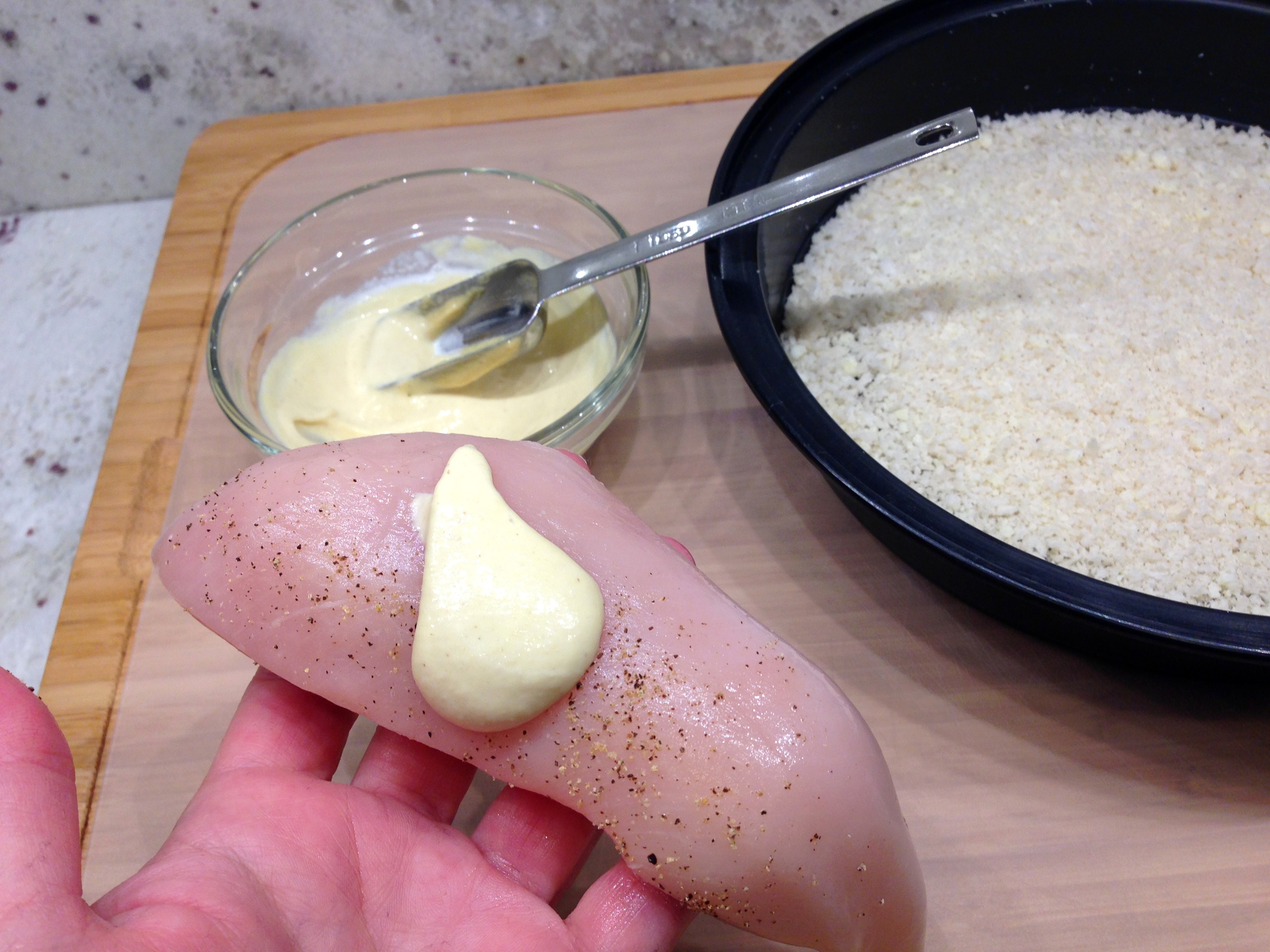
Preheat oven to 400 degrees F. Season chicken with salt and pepper. Mix Dijon and cream together in a bowl and coat chicken breasts.
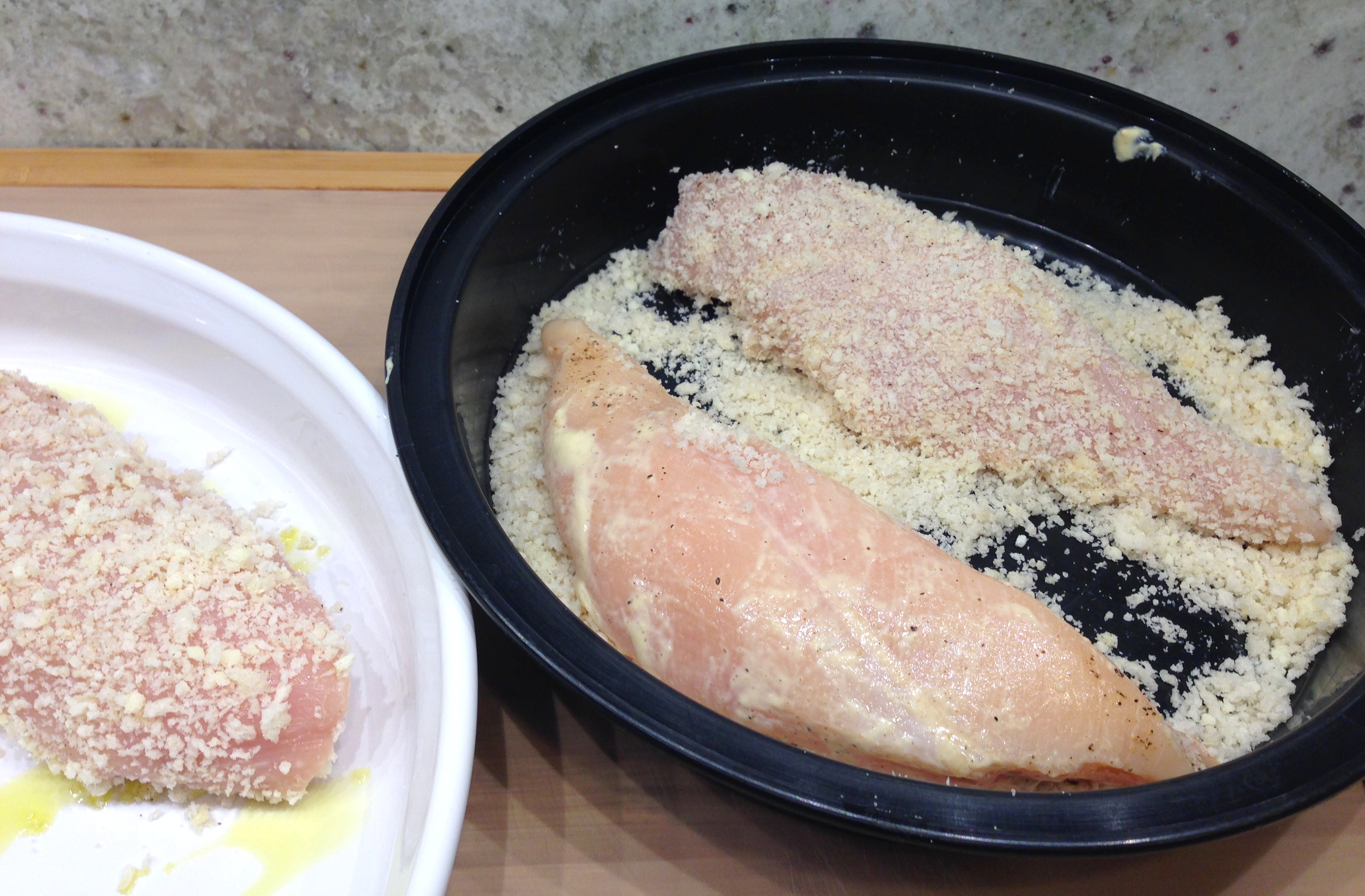
Place seasoned bread crumbs and cheese in a shallow dish and dredge chicken in crumbs.
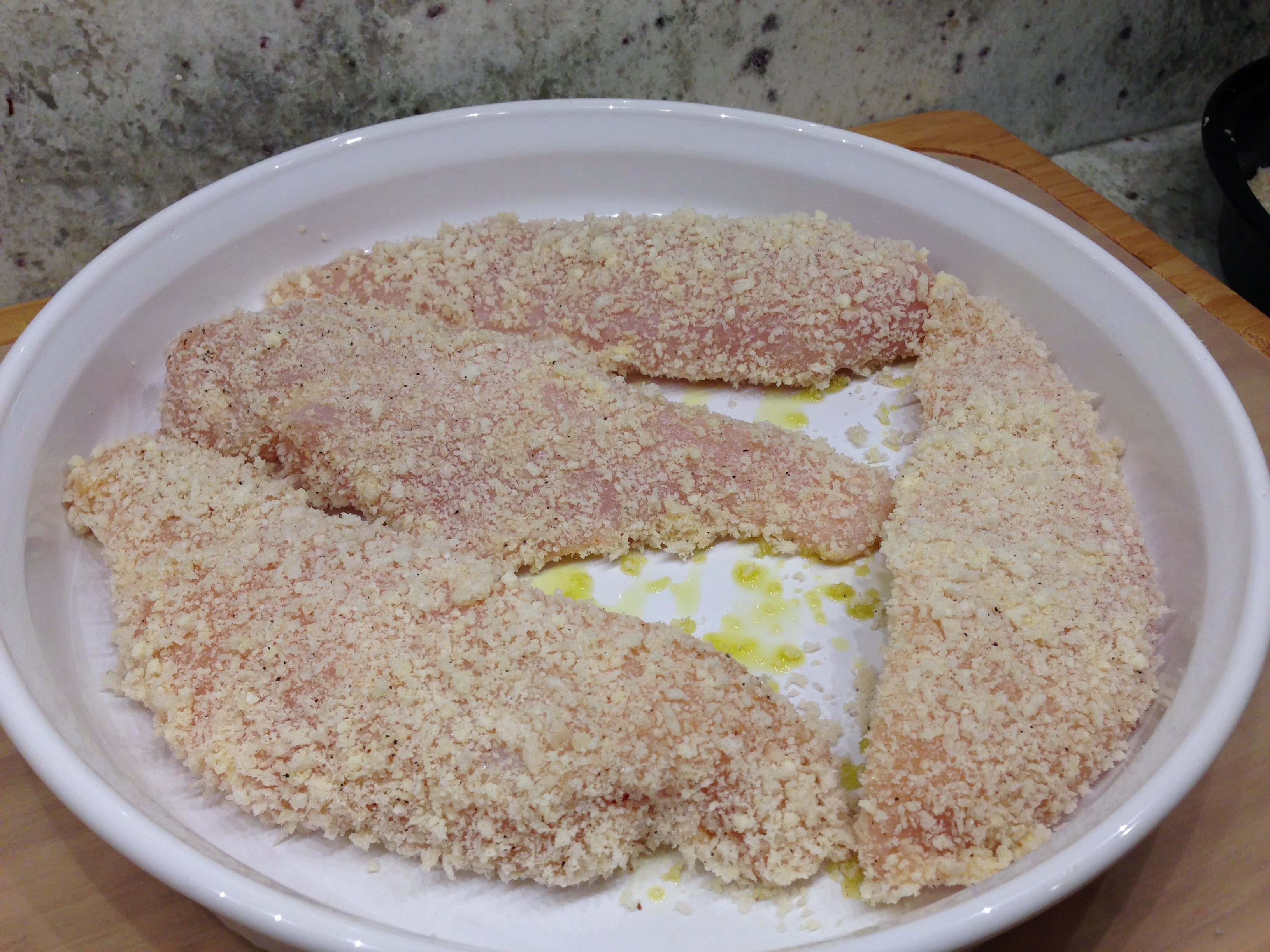
Place coated chicken pieces in a lightly greased baking dish. Bake for 20 minutes or until chicken is cooked through and juices run clear or a meat thermometer reads 160 degrees.
Dijon “Beurre Blanc”
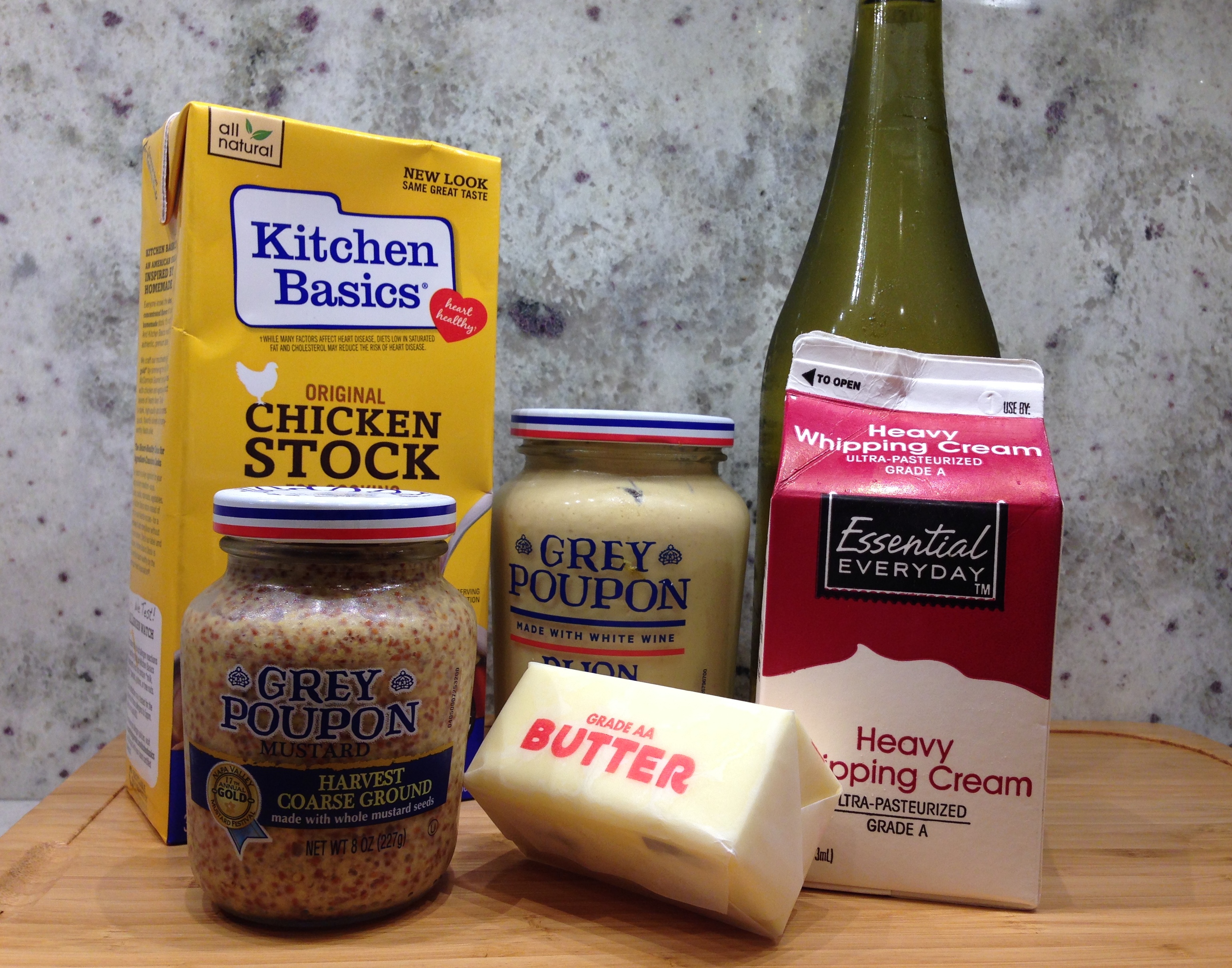
Since we are not professional chefs here, cream will cover a multitude of sins and help you create an amazing sauce!! Because Beurre Blanc is based on an emulsification between the acid, the fat and the milk solids, the cream provides a slightly more stable bridge and makes this much more fool proof. Not classic! Traditionally shallots are used in making a Beurre Blanc sauce and would be strained out before serving. But we are making a mustard sauce in a beurre blanc style with cream. That’s kind of a nifty cheat 🙂
Cut the butter into cubes and put it back in the refrigerator. Very cold butter is essential for the sauce and will keep the sauce from breaking.
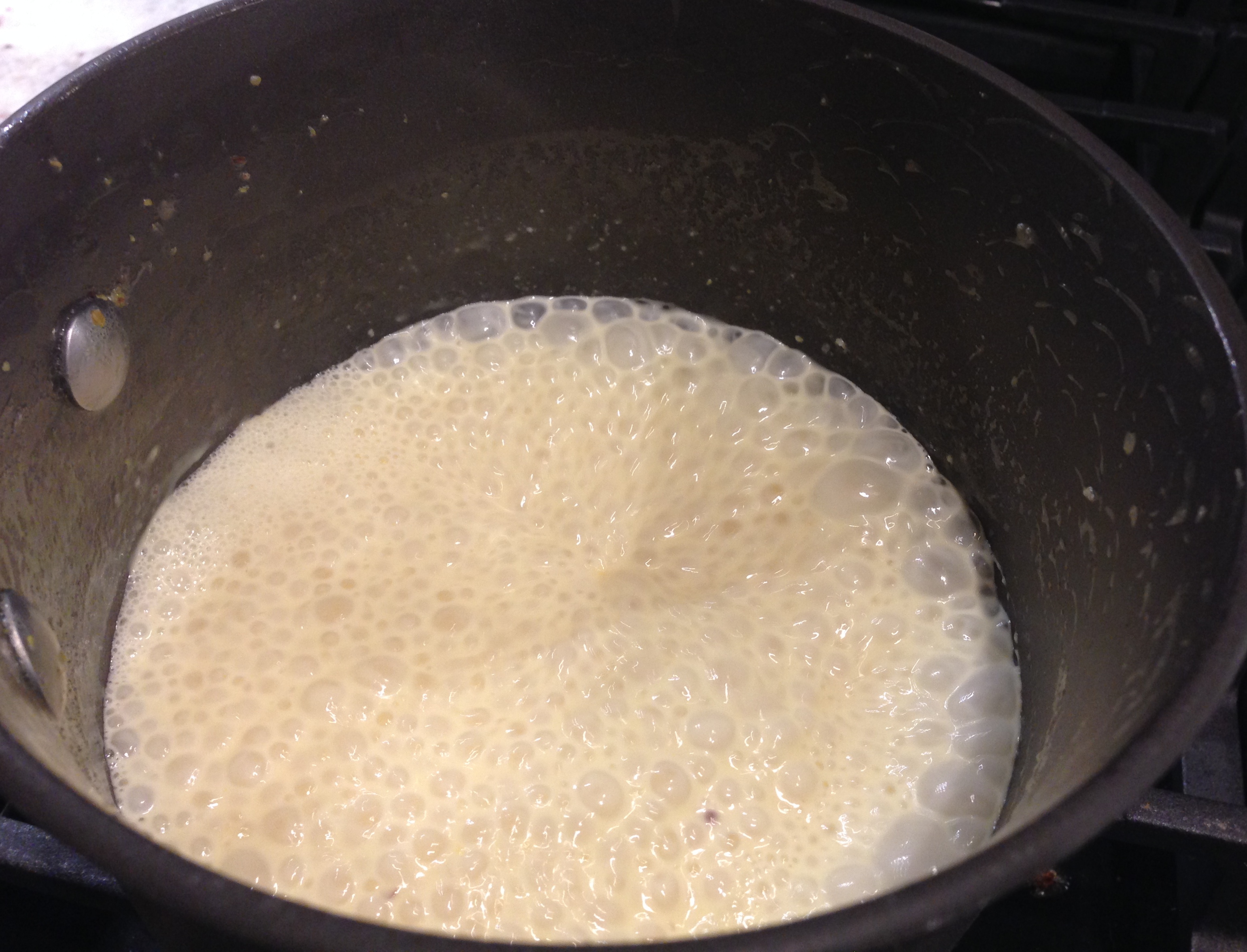
Combine all ingredients, except the butter, in a sauce pan and bring to a boil. Reduce heat to medium and continue simmering until reduced and the mixture coats the back of a spoon. (Nappe) About 10-12 minutes.*
How to spot the Stages:
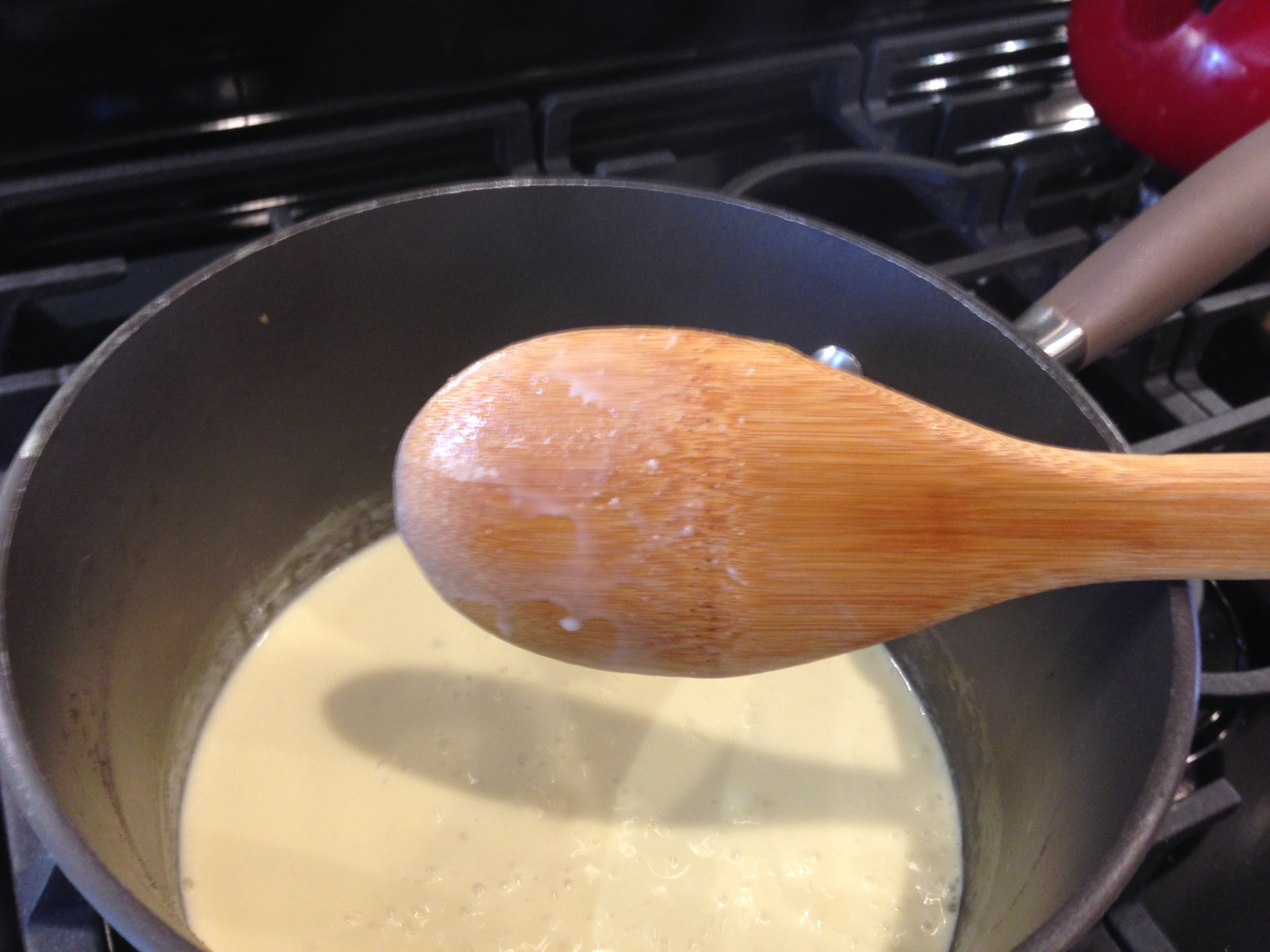
In the beginning. Mixture won’t coat the back of the spoon but has begun to reduce. See the ring around the inside of the pot where the liquid level began?
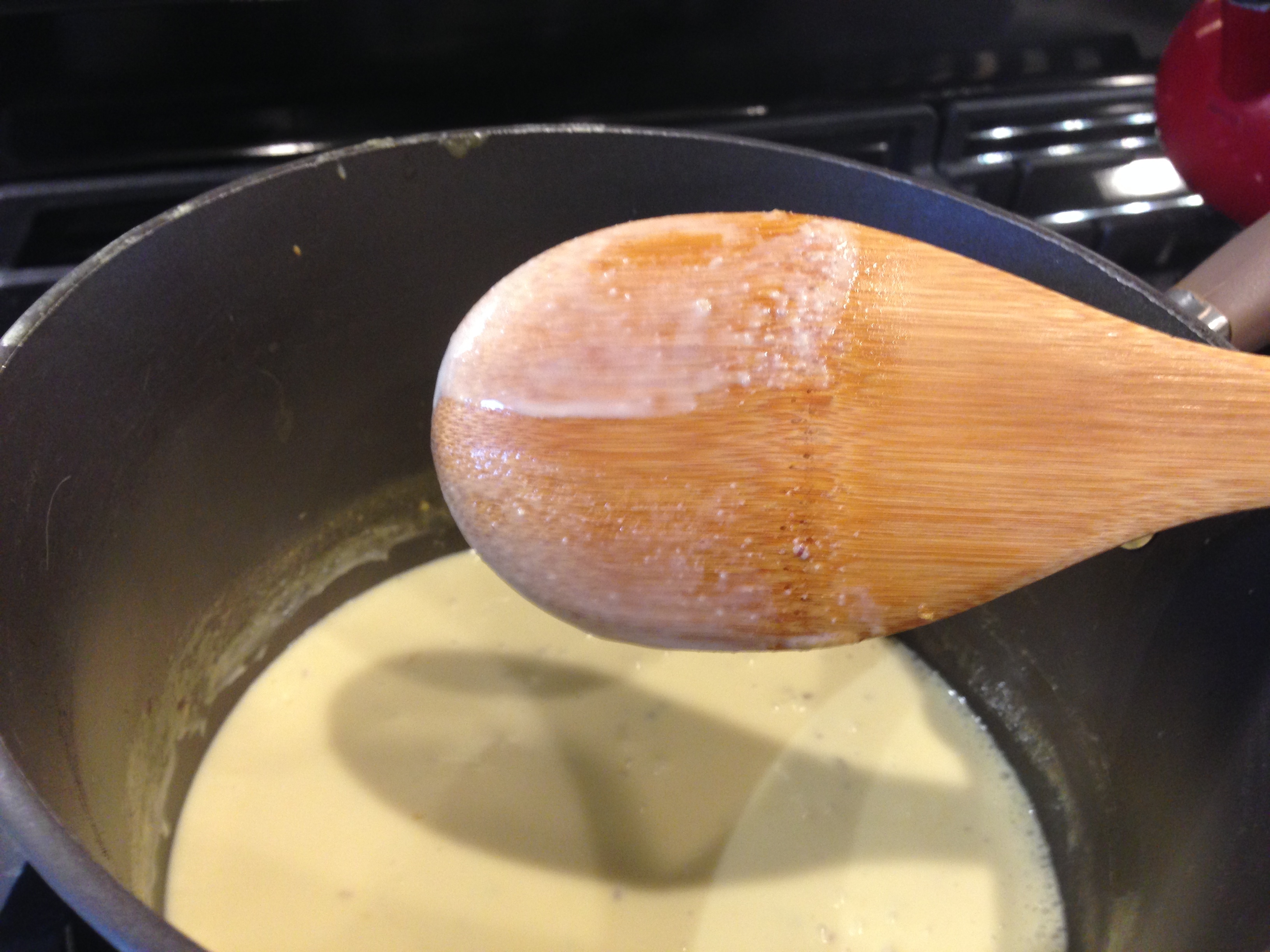
On the road to Nappe. The mixture is starting to thicken and lightly cling to the back of the spoon. Always use a wooden spoon to test this. Notice how the liquid ring has gone down some more? Reduction!
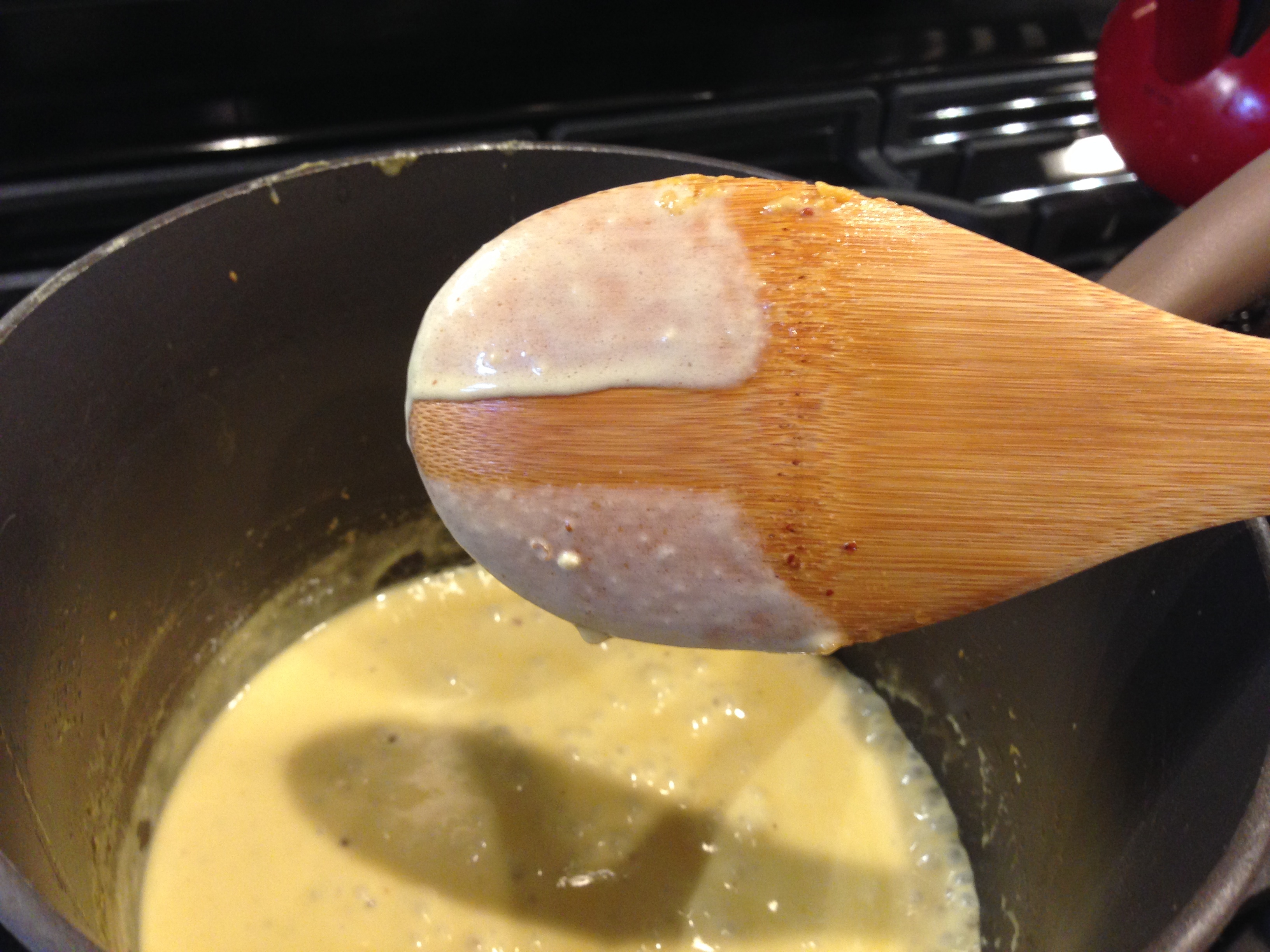
Nappe! When you run your finger over the back of the spoon the sauce separates and clings to the spoon. Perfect!
*If you need to “hold the sauce” while waiting for company to arrive, you can make the sauce to this point and stop. Just before serving, bring the mustard sauce back up to a very warm heat, not hot, before you add the cold butter so it will emulsify into the sauce. If it is too hot, the sauce will “break” or separate and you can see the individual components: the milk solids from the butter and the acid. An unsightly, oily mess.
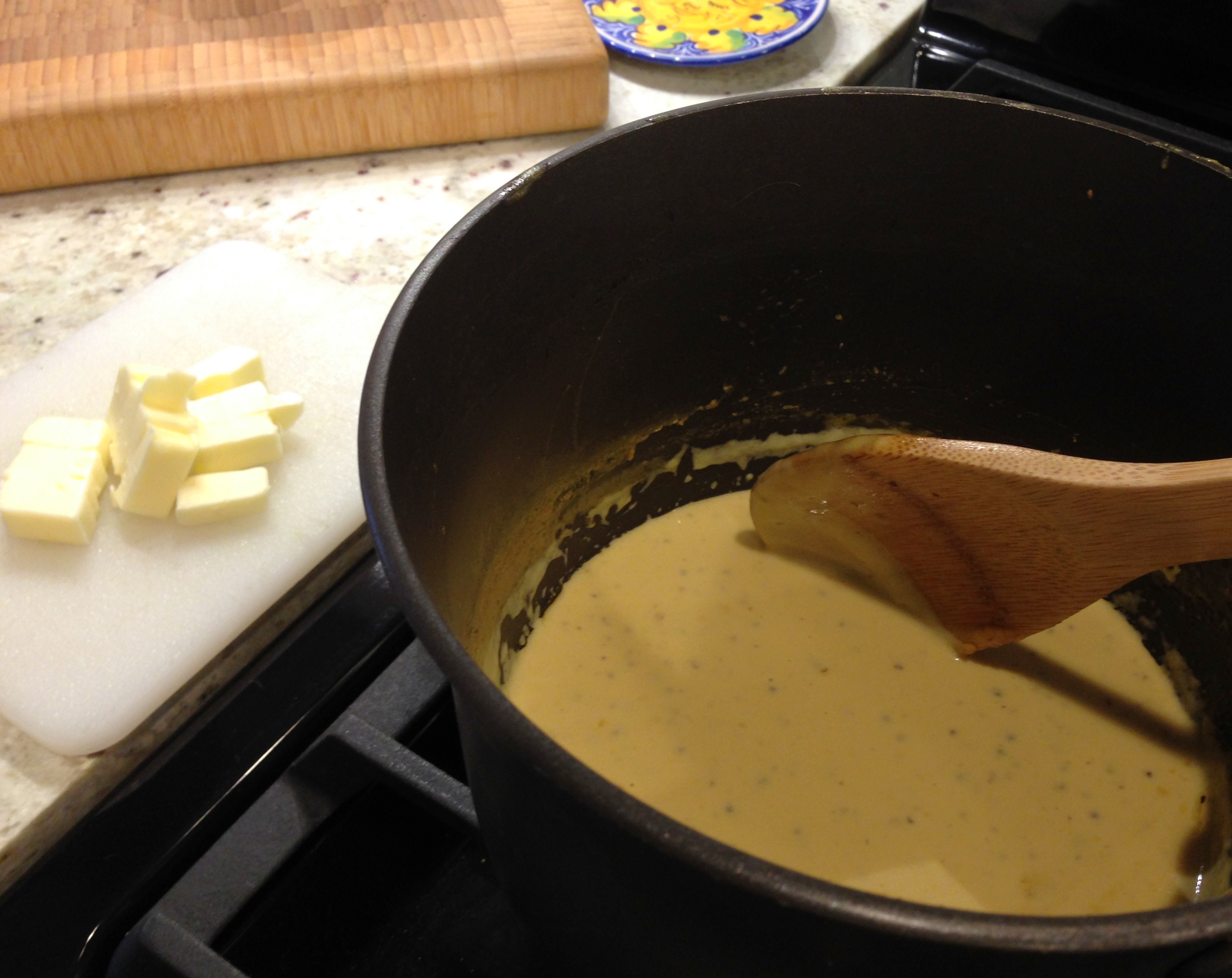
Whisk in the cold butter into the warm mustard sauce a few cubes at a time to form the Beurre Blanc sauce.
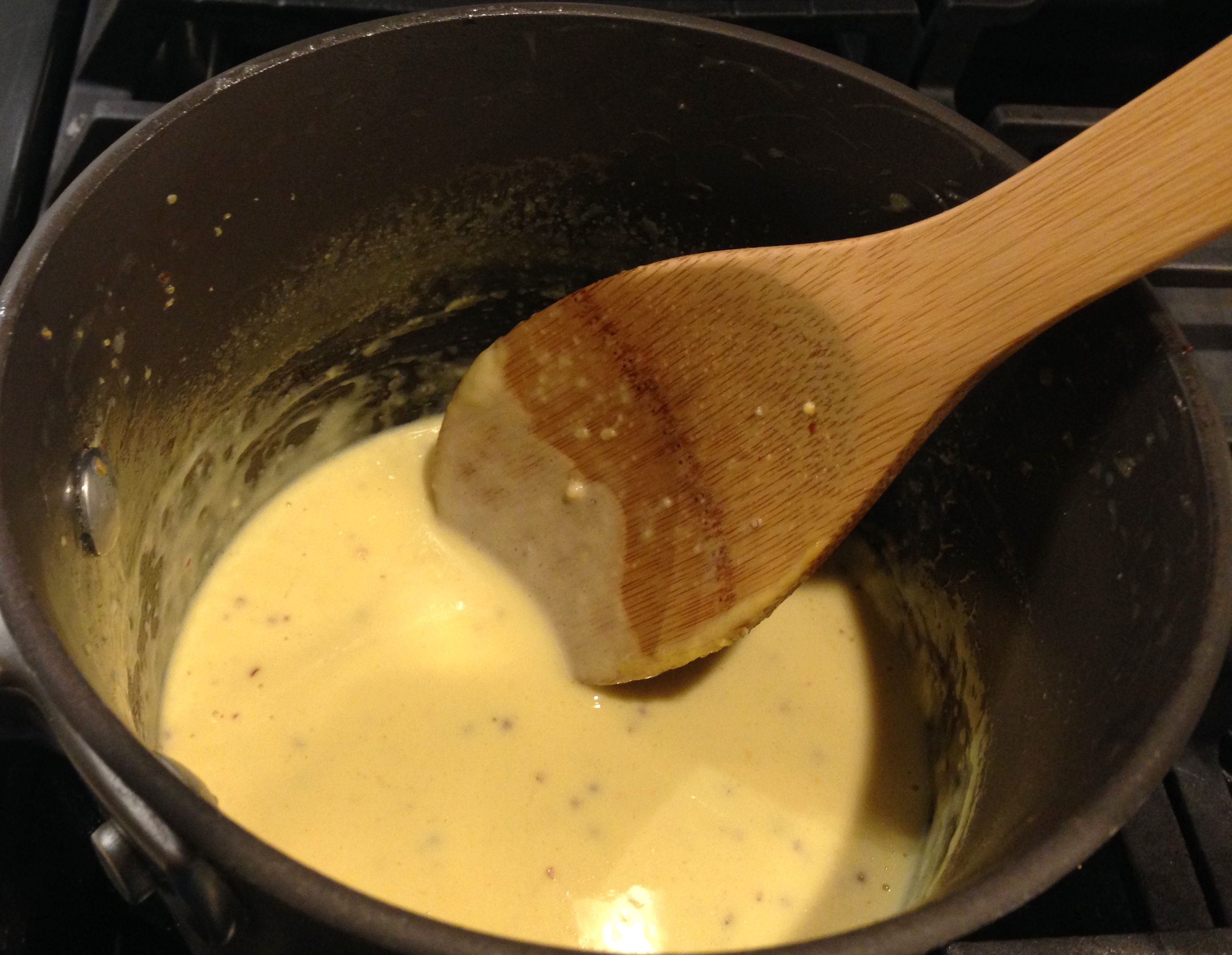
Serve immediately or keep warm over a bain marie (warm water bath). Don’t let the sauce get cooler or hotter than the temperature it was when the sauce was completed. Extreme temperatures are what cause the sauce to break.
Note: Serve with steamed asparagus spears (more stuff to put mustard sauce on) and brown rice with some chopped Italian parsley and lemon zest added to the rice after it is cooked. Drizzle sauce on the rice too!


- 4 chicken breasts, boneless and skinless
- 1 tablespoon olive oil
- Salt and pepper
- 2/3 cup Panko bread crumbs
- 1/4 cup parmesan cheese, grated
- 1 tablespoon Dijon mustard
- 2 teaspoons cream
- 1 1/4 cups beef or rich chicken stock
- 1 1/4 cups heavy cream
- 1/2 cup White Wine
- 1 tablespoon Medium Hot or Dijon Mustard
- 1 teaspoon Hot or Course Grain Mustard
- 2 tablespoons cold butter, cut in cubes and put back in refrigerator
- Crusted Chicken: Preheat oven to 400 degrees F.
- Season chicken with salt and pepper. Mix Dijon and cream together in a bowl and coat chicken breasts.
- Place bread crumbs and cheese in a shallow dish and dredge chicken in crumbs. Place coated chicken pieces in a lightly greased baking dish.
- Bake for 20 minutes or until chicken is cooked through and juices run clear or a meat therometer reads 160 degrees.
- Dijon “Beurre Blanc”: Since we are not professional chefs here, cream will cover a multitude of sins and help you create an amazing sauce!! Because Beurre Blanc is based on an emulsification between the acid, the fat and the milk solids, the cream provides a slightly more stable bridge and makes this much more fool proof. Not classic! Traditionally shallots are used in making a Beurre Blanc sauce and would be strained out before serving. But we are making a mustard sauce in a beurre blanc style with cream and that’s kind of a nifty cheat
- Cut the butter into cubes and put it back in the refrigerator. Very cold butter is essential for the sauce and will keep the sauce from breaking.
- Combine all ingredients, except the butter, in a sauce pan and bring to a boil. Reduce heat to medium and continue simmering until reduced and the mixture coats the back of a spoon. (Nappe) About 10-12 minutes.*
- Whisk in the cold butter into the warm mustard sauce a few cubes at a time to form the Beurre Blanc sauce.
- *If you need to “hold the sauce” while waiting for company to arrive, you can make the sauce to this point and stop. Just before serving, bring the mustard sauce back up to a very warm heat, not hot, before you add the cold butter so it will emulsify into the sauce. If it is too hot, the sauce will “break” or separate and you can see the individual components: the milk solids from the butter and the acid. An unsightly, oily mess.
- Serve immediately or keep warm over a bain marie (warm water bath). Don’t let the sauce get cooler or hotter than the temperature it was when the sauce was completed. Extreme temperatures are what causes the sauce to break. Yields about 1 cup of sauce.
- Serve with steamed asparagus spears (more stuff to put mustard sauce on) and brown rice with some chopped Italian parsley and lemon zest added to the rice after it is cooked. Drizzle sauce on the rice too!
